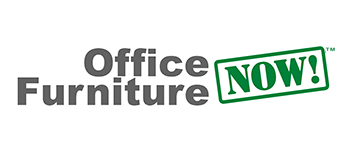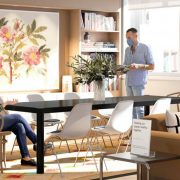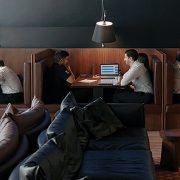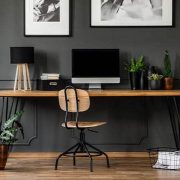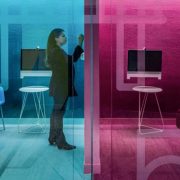Bending To Flexible Work Trends
Bending to flexible work puts your team in the driver’s seat of their work experience. Progressive companies are embracing the flexible work ethic with their eye on the future of work and business development. Many are casting off traditional business models in favor of workspaces that look nothing like the offices of their past.
Today’s most coveted workplaces offer a pleasant juxtaposition of work, conversation, and rest areas, streamlined for collaboration on the fly. They are the enablers of mobile working options, freeing employees and contractors alike from the shackles of their desks.
Flexibility and unstructured work indulge a simple employee need. Investing in that need can create workplaces that are as dynamic as the business world itself—and your competition. By 2030, it is estimated that 30 percent of all offices will become flexible, on-demand workspaces.
Flexing Your Hiring Muscle
Flex time at work has become a proven strategy in the quest for talent. But it is, in reality, just a consequence of the evolution of work itself. Nothing stands still—including the places we work. Office design has been embracing these trends over the past few years:
- Mobile meeting rooms
- Coworking partnerships
- Flexible lease terms
- Online apps for collaboration
- Programmable desking
In even the most well-planned office most corporate space is underutilized 60 percent of the time. A flexible, data-driven strategy that can be adjusted on the fly as your business needs change eliminates “empty desk syndrome,” and ultimately drives financial flexibility. Conferencing has gone rogue and is now out of bounds in break rooms, huddle spaces, and nearby cafes. So this presents an opportunity to diversify meeting your goals and growing your business with more outbound collaborative options.
Flex working allows companies to capitalize on the more holistic, integrated approach to work inspired by the coworking incubator. This is the talent pool you are hiring from so aligning with their business goals and culture maximizes your hiring potential. This progressive way of thinking can help attract and retain employees and contractors alike.
And statistics state that it might actually be cheaper to create engaging, flexible workspaces than it is to invest in traditional office spaces. The current tech-style space fit-outs cost an average of 15 percent less than conventional office space.
Mastering The Art of Flex Work
Ready to bring individuality to the workplace, large-scale? Take a look at these five key considerations as you work toward creating a collective of environments where employees want to work, engage, create, and innovate:
- Look for ways to strategically align flexibility with your unique business goals: Find your unique niche for a non-traditional office design that will maximize space usage and employee engagement.
- Provide a variety of options: Work priorities evolve constantly. Design a flexible, collaboration-centric workplace with a mix of work zones. Think outside the traditional organizational footprint and become inspired by coworking spaces, home offices, or anywhere in between.
- Invest in the right technology. Smart buildings and smart workplace tools can directly support flex working by enabling people to customize their workspace. Sit-stand desks with programmable options, zones with adjustable temperature and lighting control and conference room scheduling with an app on your phone are just a few ideas. These sensor-rich environments, along with strong data and analytics, can also help gauge what types of spaces are preferred, or not, so you can invest in a winning combination.
- Put the human experience first. Flexibility alone isn’t going to cut it in today’s competitive markets. Developing flex programs within your organization that put people first will go a long way toward this ideal. Get feedback from your team and act upon it.
- Invest in flexibility. Consider a leasing strategy that prioritizes short-term leases and other off-site space options, to procurement plans that include convertible furniture and movable walls. These options will set you on a path for unlimited growth potential.
More flexible spaces—both inside and outside the organizational footprint—can help employee preferences come alive, spark innovation and fuel insight. The competition is always changing the game. Flexible work environments give you the edge.
 MEET JANICE COONS: Janice assists clients seeking furniture for offices, healthcare, and higher education. Connecting with your business needs to create a dynamic flexible workspace is her forte. Connect with her via email janice@officefurniturenow.com or by calling 888-910-3769 x113. For more inspiration visit us on Facebook, Pinterest, and Twitter!
MEET JANICE COONS: Janice assists clients seeking furniture for offices, healthcare, and higher education. Connecting with your business needs to create a dynamic flexible workspace is her forte. Connect with her via email janice@officefurniturenow.com or by calling 888-910-3769 x113. For more inspiration visit us on Facebook, Pinterest, and Twitter!
